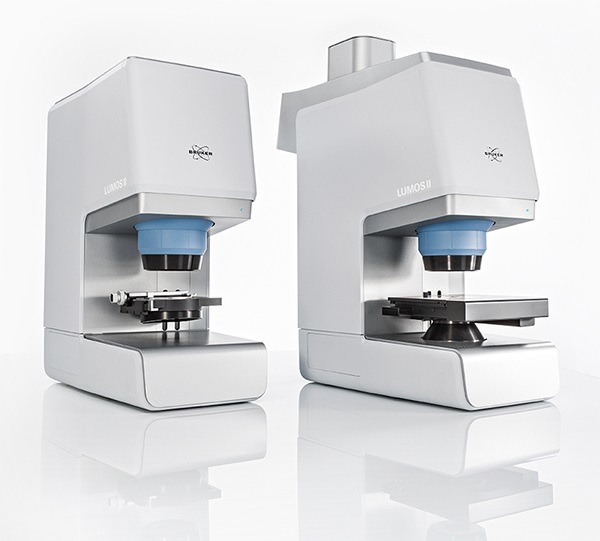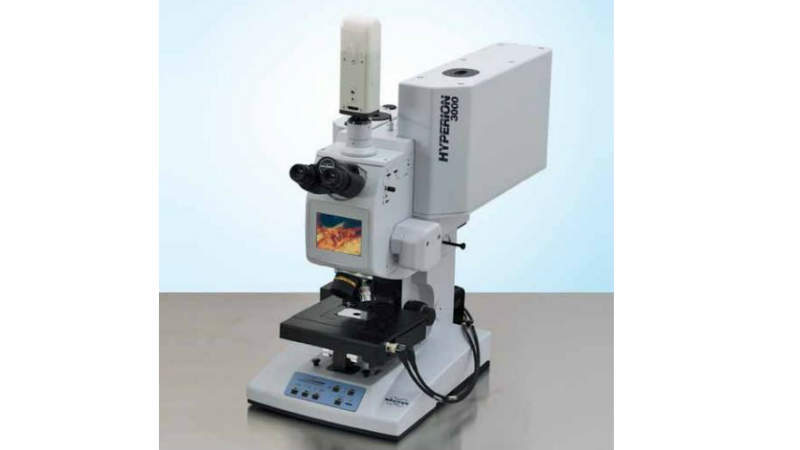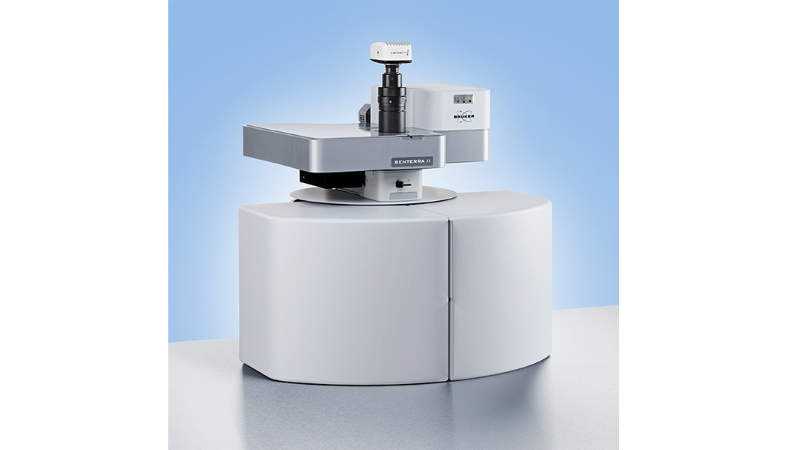For FTIR and Raman microscopes, Bruker offers LUMOS II, HYPERION and SENTERRA II.
Fully-automated FTIR microscopy: LUMOS II

The LUMOS II offers outstanding visual and spectral data quality with full automation of all measurement modes: transmission, reflection and ATR. For FTIR beginners and experts alike, the LUMOS II is the best solution for infrared microscopy.
Bruker’s exclusive Focal Plane Array (FPA) detector technology allows you to experience detailed imaging at the maximum speed. This allows you to take full advantage of the vast possibilities offered by FT-IR microscopy.
The OPUS IR software provides you with assistance whenever you need it and allows you to glide effortlessly through measurement, evaluation and reporting.
Your advantages:
- Extremely fast FT-IR imaging (FPA)
- High spectral quality and resolution
- Brilliant visual images and huge field of view
- Fully automated FT-IR microscope
- Integrated, piezo-controlled ATR crystal
- Software supported measurement and evaluation
- Automatic measurement in transmission, reflection and ATR
- Plenty of space between sample stage and lens
- Analyze samples up to 40mm in height
Chemical imaging: HYPERION

Key features of HYPERION include:
- High-spatial-resolution, limited only by diffraction of light
- High-sensitivity even at a high-spatial resolution
- ATR objective with an internal pressure sensor and highly accurate and stable column guidance mechanism for precise crystal positioning
- Dedicated grazing angle objective (GAO) with dual pass design for the analysis of thin layers on metallic surfaces
- Automated FTIR mapping with all measurement modes
- All-in-one spectroscopic software for data acquisition, analysis and documentation
- FTIR imaging with modern focal plane array (FPA) detector technology
Click here for full details.
Dispersive raman microscope: SENTERRA II

The SENTERRA II defines a new level of spectroscopic performance and user-friendliness in the class of compact Raman microscopes.
SENTERRA II is designed to deliver excellent sensitivity combined with high-resolution and state-of-the-art imaging performance. Therefore, the SENTERRA II is the platform of choice for conducting the most challenging research. Due to its high degree of automation, compact size and efficient workflow, the SENTERRA II is the ideal tool for solving real-world problems in the quality control laboratory.
Highlights:
- Research-grade spectroscopic performance
- Intuitive and convenient workflow due to software guidance and automated hardware
- Unmatched wavenumber accuracy and precision by SureCAL™
- Straightforward fast Raman imaging
- Compact design with spectrometer included in the microscope
- Full spectral range with all gratings
- Multilaser excitation with fast switching capabilities
- A combination with FT-Raman technology minimises fluorescence
- Fully automated instrument tests
- Full compliance with good manufacturing practice (GMP) / current good manufacturing practice (cGMP), good laboratory practice (GLP) and 21 CFR p11
Applications:
The SENTERRA II allows measuring Raman images and combines the obtained spatially resolved molecular information with high-quality microscopic images of the sample.
The analysis is performed contactless and without the need of sample preparation. Being suitable to be used for the detection, discrimination and identification of organic and inorganic materials the SENTERRA II has a wide range of applications, including:
- Failure analysis of pharma products, electronics and plastics: identification of particles, inclusions and inhomogeneity
- Imaging of the distribution of components in complex materials: multi-layer laminates, varnish, pharmaceutical tables
- Surfaces and interfaces, the examination of composition and homogeneity
- Life Science, the study of the molecular composition of cells and tissue
- Materials Science: characterization of new materials (silicon, carbon)
- Forensics, identification of trace evidence and drugs
- Art, determination of used materials



